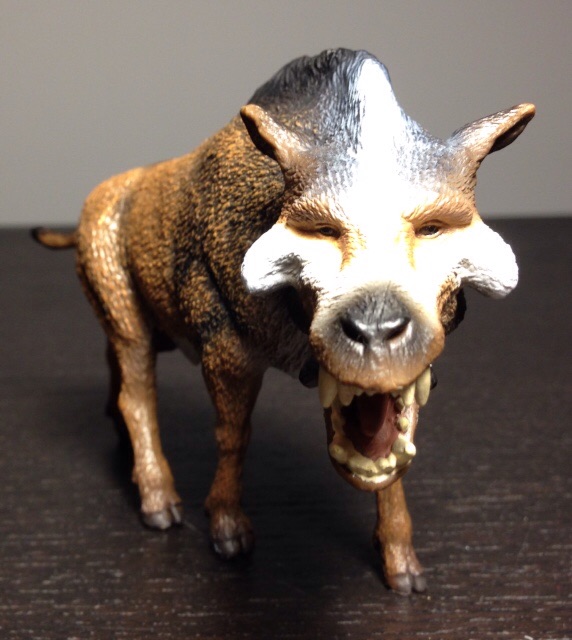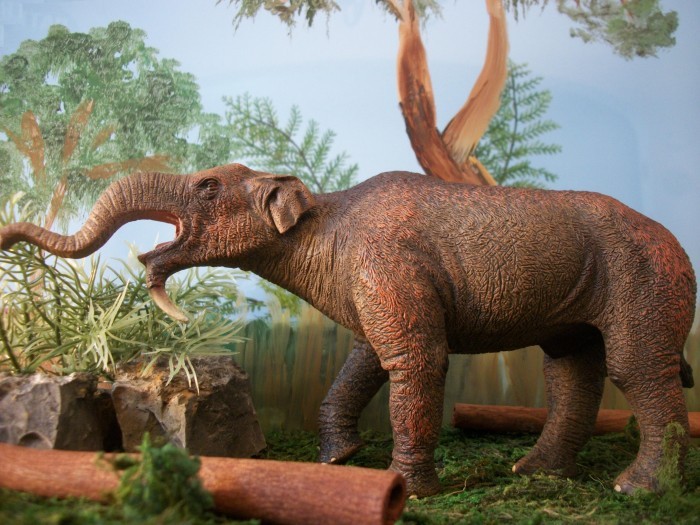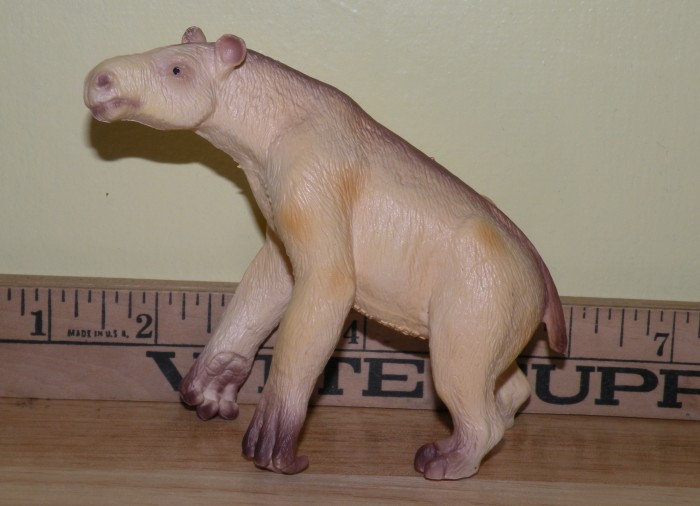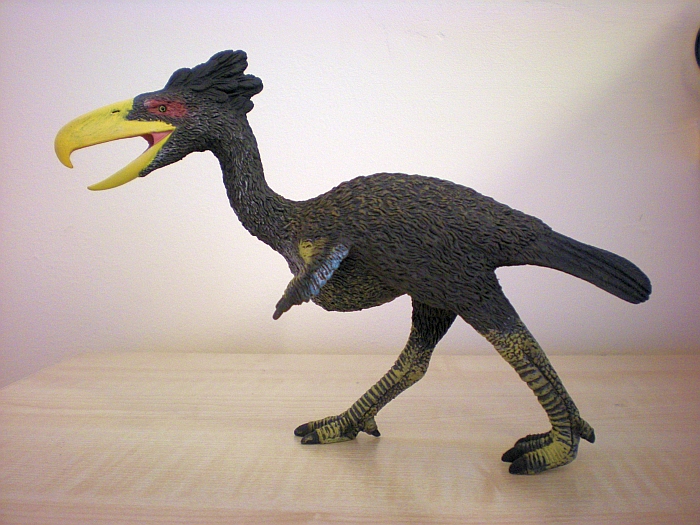Age: Miocene
Review: Megalodon (Wild Safari by Safari Ltd.)

2.2 (17 votes)
MEGALODON! The undisputed monarch of all sharks. Possibly the largest and most powerful flesh-eating animal to ever inhabit Earth’s seas. Star of cheesy novels, cheesier made-for-TV movies, and even cheesier pseudo-documentaries. And surprisingly enough, underrepresented in the world of prehistoric toys. For a long time, the proper scientific name for this animal was Carcharodon megalodon, however, it has recently been reclassified as Carcharocles megalodon.
Review: Hyaenodon (Mojö Fun)
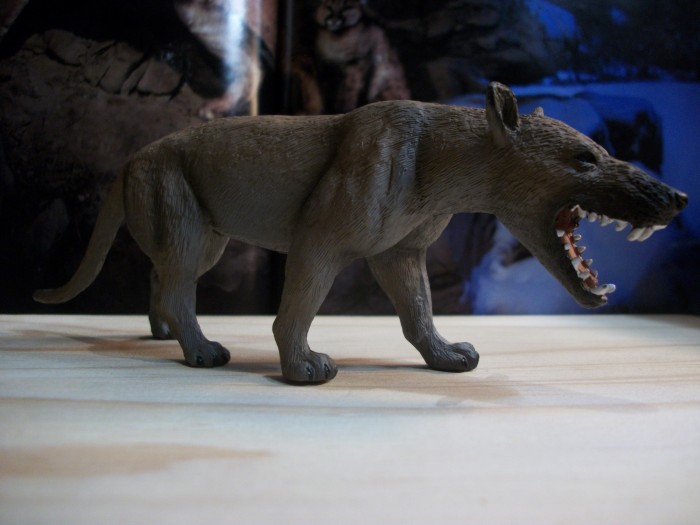
4.7 (9 votes)
Hyaenodon was an interesting predatory animal that first evolved 42 million years ago and lived from the Late Eocene through to Early Miocene. The first thing to know about them is that they are not related to hyenas. In fact, they were a creodont, a long extinct group of mammals that did not survive the Miocene.
Review: Deinotherium (Deluxe Collection by CollectA)
Review: Phorusrhacos (X-Plus)
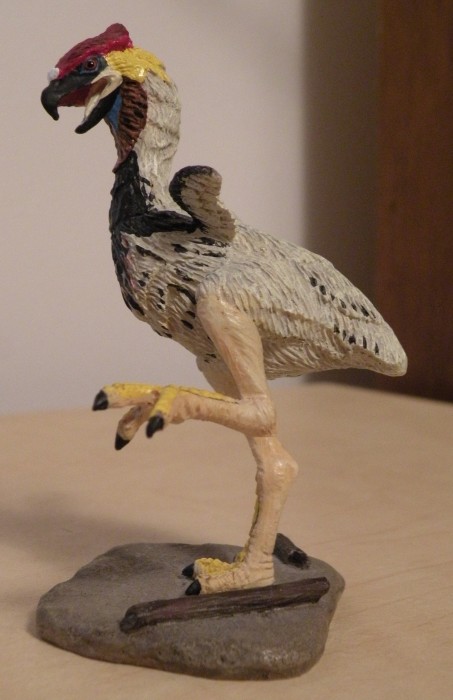
5 (5 votes)
After the death of the non-avian dinosaurs some of the remaining descendants tried to re-claim their former glory and put mammals back in their place. These of course were the terror birds or Phorusrhacidae which carried on the legacy of Tyrannosaurus and its kin between 62-2 million years ago.
Review: Chalicotherium (Bullyland)
Review: Deinotherium (Bullyland)
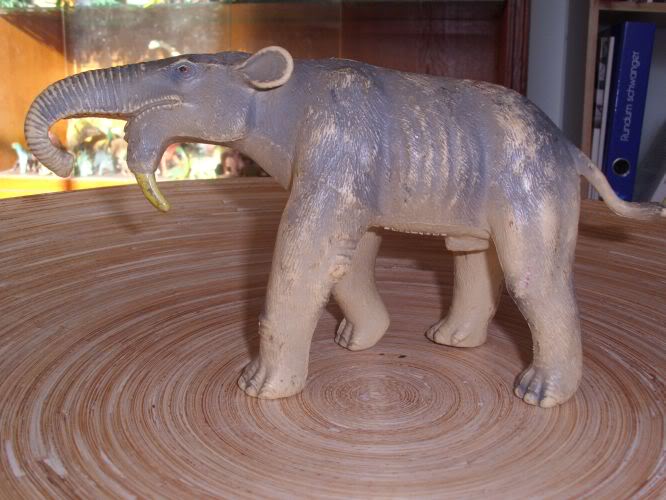
4.4 (5 votes)
I guess it is time for a review of Bullyland Deinotherium.
It is a highly sought after figure, not yet a myth, but quite close. This is due to the relatively little number of Deinotheriums that have been produced and delivered.
Deinotherium (“terrible beast”) was a large prehistoric relative of modern-day elephants that appeared in the Middle Miocene and continued until the Early Pleistocene.
It is a highly sought after figure, not yet a myth, but quite close. This is due to the relatively little number of Deinotheriums that have been produced and delivered.
Deinotherium (“terrible beast”) was a large prehistoric relative of modern-day elephants that appeared in the Middle Miocene and continued until the Early Pleistocene.
Review: Kelenken (Paleomaster)
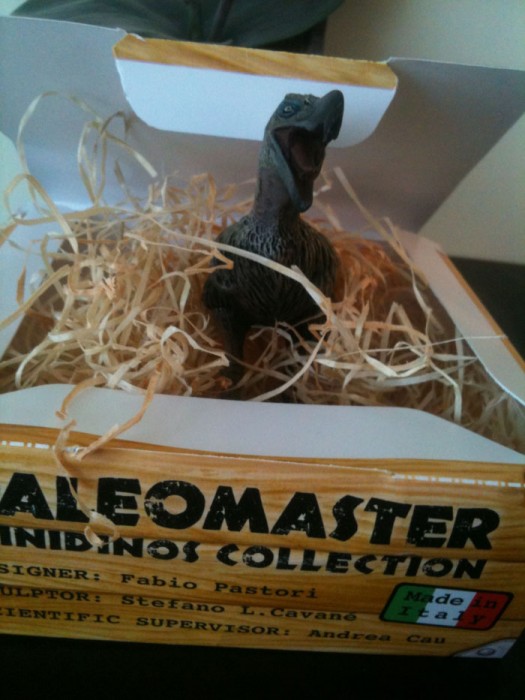
3.8 (4 votes)
Review and Photos by Dinodinkies. Edited by Plesiosauria.
Kelenken is an extinct bird belonging to the Phorusrhacidae Family. It lived in the Miocene and was discovered in Argentinia, where it caused terror to the animals living there. The bird was probably 3m high, which makes it the largest terrorbird.
Kelenken is an extinct bird belonging to the Phorusrhacidae Family. It lived in the Miocene and was discovered in Argentinia, where it caused terror to the animals living there. The bird was probably 3m high, which makes it the largest terrorbird.
Review: Diatryma (Schleich)

3.4 (7 votes)
The Vintage Schleich Diatryma is a nice little figure to have! It is brightly coloured (although I know of monochrome ones being out there) and looks as if it is smiling at you. Looking at this figure, one can’t believe it was a more or less aggressive Eocene omnivore, lurking for prey in the Messel woods, not even avoiding small horses.
Review: Hyaenodon (AAA)
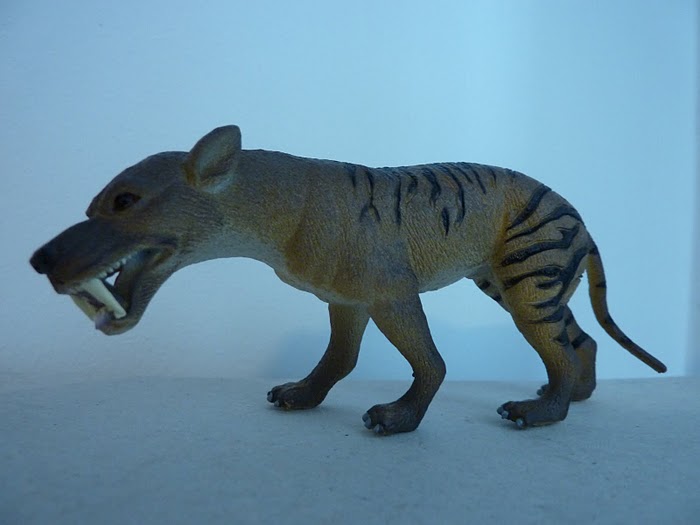
3.5 (8 votes)
Review and photos by Mihnea (Wildheart)
Existing for approximately 26 million years, Hyaenodonts were some of the largest predators of the Late Eocene and Early Miocene epochs. Their name comes from the sharp hyena-like teeth used to tear apart possible prey. The skulls of these animals were huge and well equipped for hunting, but their brains were quite small, something typical in primitive carnivorous mammals.
Existing for approximately 26 million years, Hyaenodonts were some of the largest predators of the Late Eocene and Early Miocene epochs. Their name comes from the sharp hyena-like teeth used to tear apart possible prey. The skulls of these animals were huge and well equipped for hunting, but their brains were quite small, something typical in primitive carnivorous mammals.
Review: Kelenken (Deluxe model by CollectA)
Review: Macrauchenia (Prehistoric Mammal Series by Schleich)
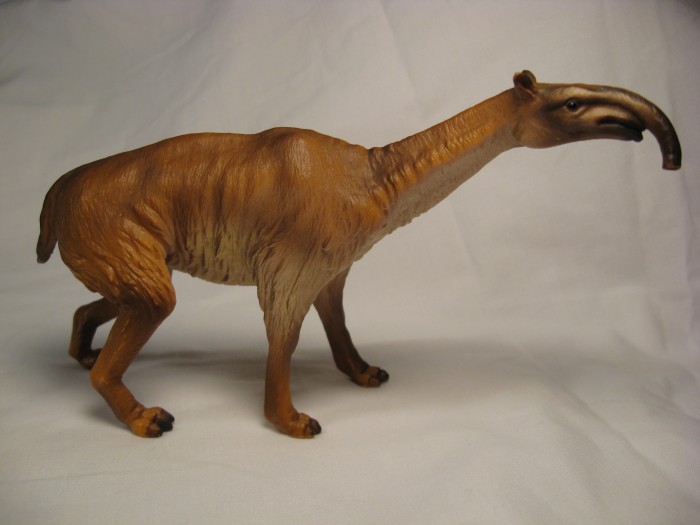
4.9 (12 votes)
The peculiar looking ungulate Macrauchenia (“large neck”) inhabited South America for roughly 7 million years, from the Miocene to the Late Pleistocene, only becoming extinct around 20,000 years ago. This herbivorous animal resembled a camelid superficially, when in reality it was a member of an extinct order called Litopterna.

